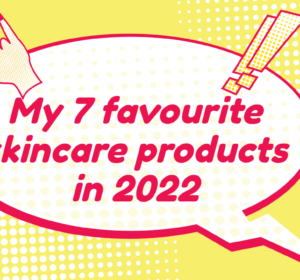All you should know About Sun Protection
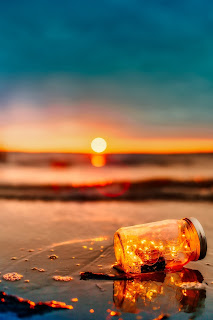 |
| Picture by Pixabay |
Sun radiation is continuously reaching our planet. They are a key factor for several processes in our organism but in excess, they can seriously harm us. The atmosphere has natural filters that absorb some solar radiation, weakening the amount of radiation we receive. However, those filters are becoming weaker and more radiation is reaching to the Earth.
Doctors have been advising us for some time about how important sun protection is. But what is the danger of solar radiation? What is sun protection? What ingredients do sun protectors have? How do they work? I am going to answer these questions in this post.
Dangers of Solar Radiation
UV-A and UV-B radiation can change the skin structure, externally and internally, producing hyper-pigmentation, sunburns, wrinkles and the most dangerous thing, skin cancer. UV-B radiation produces sunburns in the skin whereas UV-A radiation penetrates deeper in the skin and is responsible for wrinkles, dullness and increase the carcinogenic effect of UV-B radiation. However, solar radiation has some beneficial effects for our bodies, as helps in vitamin D production among other processes. That means we cannot eliminate sun radiation but we need to protect ourselves against it when exposing to the sun.
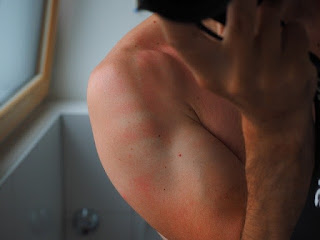 |
| Picture by Hans Braxmeier |
What are sun protectors? Type of protectors
Sun protectors are those products that are applied over the skin to protect it against UV radiation. Sun protection is important when we go out and about but also in our day-to-day life. We do not realise but we are exposed to the sun when going shopping, walking the dog, driving to the job and in any other daily situation.
There are different type of sun protectors and it can be difficult to choose the right one. We can classify those following different criteria. Application mode, type of filter, texture and level of sun protection are the most important. Note that a protector has one characteristic of each of the criteria factors.
Type of Protectors depending on Application Mode
Cream.- They are the most popular sun protection application mode. They have fluid texture and matte finish. Some of them offer other benefits as giving some colour to the skin, anti-pigmentation properties, and other.
Spray.- This type is very handy, with few shuts you can cover large areas of the body. Some of them are waterproof and sweatproof. Other has a special formulation that makes them ideal to apply on top of the makeup.
Powder.- They are becoming popular as they are very easy to apply. They have a small size that makes it easy to carry in the bag. Normally they come with a brush or sponge to facilitate the application.
Capsule.- They are nutritional supplements with nutrients that help with cell photoprotection. They can contain vitamins, beta-carotene and other compounds. It is very important to follow maker guidance when taking this type of protectors.
Type of Protectors depending on the filter
Physicals.- The physical protectors reflect the solar radiation, they work as a mirror. They are normally broad-spectrum protectors. That means that they reflect all type of radiation, including UV radiation and also visible and IR radiation. Another name for these sun protectors is sunscreens. They are highly recommended for babies.
Chemicals.- This type of protectors absorb UV radiation. They absorb incident energy, transform it to thermal radiation and emit that thermal radiation, harmless for the skin. Depending on which type of radiation they absorb, they are effective against UV-A radiation, UB-B radiation or both. It is important to apply them at least 30 minutes before exposing to the sun and to re-apply every 2-3 hours, depending on the protector.
Biological.- They are not exactly filters but I am going to include them here as they help and work together with the filters. This type of protectors are anti-oxidant that stop or repair the oxidative process produced in the cell for UV-A radiation. The most common ingredients are vitamin A, C and E.

Type of Protectors depending on the Texture
Cream.- Ideal for dry skin. They can have colouration.
Emulsion.- Light texture ideal for oily and combination skin. Some of them have colouration.
Gel.– They are very light texture and produce a refreshing feeling. They are easy to apply and absorb quickly without leaving an oily finish. Ideal for oily, combination and acne-prone skin.
Oil.- They are for body application only, you should never use them on the face. They produce a satin effect on the skin protecting it at the same time.
Type of Protectors depending on the Level of Protection
Sun Protection Factor (SPF) is a number that compares with how long the skin takes in getting red without protection. It is an indication about how long UV-B radiation takes in penetrate and produces redness on the skin where the protector is applied. Therefore, SPF 30 means that skin takes 30 minutes more in getting red compared with bare skin. The level of protection you should use will depend on your Fitzpatrick skin type.
SPF 50+.- Ideal for babies over 6 months and people with very fair skin colour.
SPF 50.- For people with soft and fair skin which tends to redness without tanning
SPF 20-30.- Ideal to use when the skin is fairly tanned.
SPF 15.- Ideal for people with tanned skin or people with dark skin colour.
How to apply the sun protector
Apply sun protector at least 30 minutes before exposing to the sun, covering all the skin generously. Extend it in a uniform layer giving attention to forgotten areas as ears, neck, hands and feet. Re-apply every 2 hours or after getting a bath or sweating in excess.
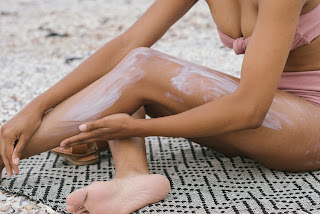 |
| Picture by rfStudio |
Ingredients in Sun Protectors
As mentioned earlier, there are two main types of sun filters, physical and chemicals. Physical protection acts as a shield on the skin surface. Active ingredients on this type of protectors are zinc oxide and titanium oxide. Both are considered safe ingredients by the FDA.
Chemical protectors work like a sponge absorbing UV sun radiation. These protectors can contain different ingredients, some of them quite controversial. Some of the ingredients they can contain are oxybenzone, avobenzone, octysalate, octocrylene, homosalate and octynosalate. This list includes two ingredients that are suspects of harming the coral riffs barrier and therefore are banned in some countries. These ingredients are oxybenzone and octynoxate. Other ingredients they can contain are dioxybenzone, sulisobenzone, methyl-anthralynate and retinyl palmitate. Dioxybenzone and retinyl palmitate are suspected to be harmful to the skin. Nevertheless, there is no scientific evidence supporting that.
On top of the protection ingredients, the ideal sun protector should contain natural vegetable oils and should not contain artificial aromas. They should also contain minerals, vitamin C and anti-oxidant. It is a plus if they contain aloe vera, carrot extract, green tea, or sunflower oil.
Other precautions and cares when exposing to Sun
When exposing to the sun the use of the sun protector is necessary but we need to take other precautions also.
Use a hat to protect scalp, face and neck.
Use protective clothes
Use sunglasses to protect your eyes
Avoid sun exposition between 12 pm and 4 pm
Keep babies under 6 months away of sun exposition
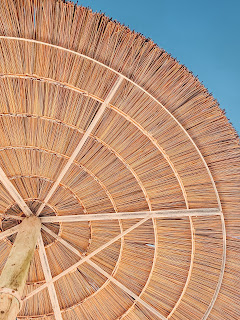 |
| Picture by Jess Vide |
If despite using sun protection and following the recommendations you have sunburns skin get out of the sun as soon as possible and follow the advice of the British Skin Foundation and NHS:
Take painkillers, such as paracetamol or ibuprofen for any pain
Cool your skin with a cool shower, bath or damp towel
Apply after sun cream or spray, like aloe vera
Drink plenty of water to cool down and prevent dehydration
Cover sunburn skin from direct sunlight
And the DO NOT you need to follow are:
Do not petroleum jelly on sunburn skin
Do not put ice or icepacks on sunburn skin
Do not pop any blister
Do not scratch or try to remove peeling skin
Do not wear tight-fitting clothes over sunburn skin
Buy a quality sun protector with SPF over 15, checking that is broad-spectrum protection. It must have the Skin Cancer Foundation approval symbol (see below) which is a warranty about the safety of the ingredients for your skin. Apply the product in the right way, following brand recommendations. And, last but not least, enjoy a wonderful beach day without any risk.

Bear in mind that some of the links in this post are affiliate links and if you go through them to make a purchase I will earn a commission. Keep in mind that I link these companies and their products because of their quality and not because of the commission I receive from your purchases. The decision is yours, and whether or not you decide to buy something is completely up to you.
